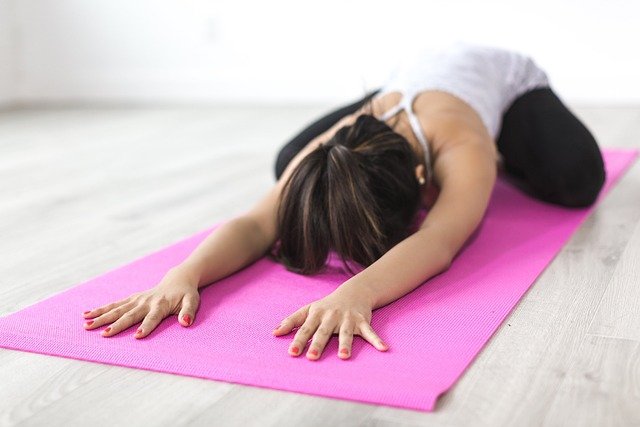Microdosing Movement: The Science of Mini-Exercise Bursts
Imagine transforming your health through movement snippets as brief as a commercial break. What if the key to unlocking your body's potential lies not in grueling gym sessions, but in strategic micro-movements throughout your day? Welcome to the world of movement microdosing, where small bursts of activity yield big wellness rewards.

Rooted in the understanding of the human body’s evolutionary need for regular movement, this approach aligns with our ancestors’ lifestyle of constant, low-intensity activity. In contrast to modern sedentary behaviors, movement microdosing aims to reintroduce regular physical engagement throughout the day, mirroring the natural patterns our bodies are designed for.
The Science Behind Micro-Movements
Research in exercise physiology has begun to shed light on the effectiveness of short movement bursts. Studies indicate that even brief periods of physical activity can trigger beneficial physiological responses. These include improved insulin sensitivity, enhanced cognitive function, and increased metabolic rate.
A groundbreaking study published in the Journal of Applied Physiology found that intermittent walking breaks during prolonged sitting significantly lowered postprandial glucose and insulin levels. This suggests that micro-movements can play a crucial role in metabolic health, particularly for individuals with sedentary lifestyles.
Moreover, neuroscientific research has revealed that short bursts of movement can stimulate the release of neurotransmitters like dopamine and serotonin, contributing to improved mood and cognitive performance. This neurochemical boost can enhance focus, creativity, and overall mental well-being.
Implementing Movement Microdosing in Daily Life
Integrating movement microdosing into your routine doesn’t require drastic lifestyle changes. The key is to identify opportunities for brief activity bursts throughout your day. Here are some practical strategies:
-
Desk-based micro-exercises: Perform seated leg raises, desk push-ups, or chair squats during work breaks.
-
Movement snacking: Take a 2-minute walk every hour, or do a set of bodyweight exercises between tasks.
-
Active waiting: Use waiting time (e.g., for the elevator or microwave) to do calf raises or stretches.
-
Micro-commutes: Park farther away or get off public transport a stop early to incorporate short walks.
-
Tech-triggered movement: Use app notifications or smart device reminders to prompt regular movement breaks.
The goal is to accumulate these micro-movements, creating a mosaic of physical activity that complements any structured exercise regimen.
Benefits Beyond Physical Health
While the physical benefits of movement microdosing are significant, its impact extends into mental and emotional realms as well. Regular movement breaks can serve as mindfulness moments, offering brief respites from stress and enhancing overall well-being.
Research in occupational health has shown that micro-breaks involving physical activity can reduce workplace fatigue and improve job satisfaction. By breaking up long periods of inactivity, movement microdosing can contribute to better posture, reduced muscle tension, and improved circulation, all of which support both physical and mental performance.
Furthermore, the accessible nature of micro-movements makes physical activity less daunting for individuals who may be intimidated by traditional exercise regimens. This can lead to increased self-efficacy and a more positive relationship with physical activity overall.
Customizing Your Micro-Movement Strategy
The beauty of movement microdosing lies in its flexibility and adaptability to individual needs and preferences. To create an effective personal strategy:
-
Assess your daily routine to identify sedentary periods ripe for movement interventions.
-
Experiment with different types of micro-movements to find what feels enjoyable and sustainable for you.
-
Gradually increase the frequency and intensity of your micro-movements as your body adapts.
-
Use wearable technology or smartphone apps to track your cumulative movement throughout the day.
-
Combine movement microdosing with other wellness practices like deep breathing or gratitude exercises for a holistic approach.
Remember, the goal is consistency rather than intensity. Even small increases in daily movement can yield significant long-term health benefits.
Micro-Movement Marvels: Quick Facts and Tips
• A study found that two-minute walking breaks every 20 minutes improved glucose metabolism by up to 30% in sedentary adults.
• Standing for just three hours a day, five days a week, can burn up to 30,000 extra calories per year — equivalent to running 10 marathons.
• Micro-movements can increase NEAT (Non-Exercise Activity Thermogenesis), which accounts for up to 50% of total daily energy expenditure in active individuals.
• Incorporating just 5 minutes of movement every hour can improve mood and reduce feelings of fatigue by up to 40%.
• Alternating between sitting and standing every 30 minutes can reduce back and neck pain by up to 54% in office workers.
Embracing the Micro-Movement Revolution
Movement microdosing represents a paradigm shift in our approach to physical activity and health. By recognizing the power of small, consistent actions, we can transform our relationship with movement and unlock new pathways to wellness. As research continues to unveil the benefits of this approach, integrating micro-movements into our daily lives becomes not just a health strategy, but a fundamental aspect of living in harmony with our body’s natural needs. Embrace the micro-movement revolution and discover how small steps can lead to giant leaps in your overall health and well-being.





